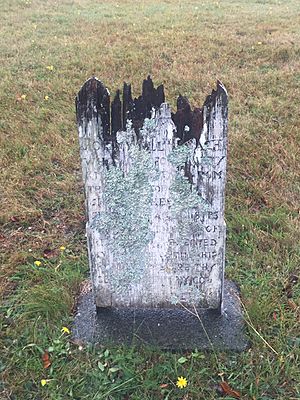HMS Winchester (1822) facts for kids

HMS Winchester
|
|
Quick facts for kids History |
|
|---|---|
| Name | HMS Winchester |
| Ordered | 23 May 1816 |
| Builder | Woolwich Dockyard |
| Laid down | November 1818 |
| Launched | 21 June 1822 |
| Commissioned | 16 September 1822 |
| Renamed |
|
| Fate | Sold for breaking 8 April 1921 |
| General characteristics | |
| Class and type | 60-gun Southampton-class frigate |
| Tons burthen | 1,468 11/94 bm (as designed) |
| Length |
|
| Beam | 44 ft 3.25 in (13 m) |
| Depth of hold | 14 ft 6 in (4 m) |
| Sail plan | Full-rigged ship |
| Complement | 450 |
| Armament |
|
The HMS Winchester was a large sailing ship, known as a frigate, built for the Royal Navy in the United Kingdom. Construction began in 1816 at Woolwich Dockyard and the ship was launched on June 21, 1822. Even though it was designed to carry 60 guns, the Winchester and other ships of its type usually carried 52 guns. This ship had a long and interesting career, serving in different parts of the world before becoming a training ship for young people. It was finally sold in 1921.
Contents
The Story of HMS Winchester
Early Life and First Missions
The Winchester was ordered in 1816 and its construction started in 1818. It was officially launched on June 21, 1822, and began its service on September 16 of the same year.
In October 1829, Captain Charles Austen took command of the ship in Bermuda. Captain Austen was the brother of the famous novelist Jane Austen. At this time, the Winchester was the main ship, or flagship, for the North America and West Indies Station.
From 1831 to 1861, the Winchester served in various important regions. These included North America and Southeast Asia.
Adventures in Distant Waters
Between 1834 and 1838, the ship was stationed in the East Indies under the command of Captain Edward Sparshott. Later, from 1842, it served as the flagship for the Cape of Good Hope Station, led by Captain Charles Eden.
In 1852, Captain Granville Gower Loch took command. The Winchester became the flagship in China and the East Indies. During 1852 and 1853, the ship participated in military operations along the coast of Burma during the Second Burmese War. Its role was to help keep the Irrawaddy River clear and remove Burmese forces from positions along its banks.
Keeping Order and Making Treaties
In April 1853, Rear Admiral Fleetwood Pellew raised his flag aboard the Winchester. By September 1854, he was near Hong Kong to take command of the East Indies and China Station. At one point, there was a serious disagreement among the crew. Admiral Pellew had to take strong action to restore order and ensure everyone followed instructions. This helped prevent further problems and kept the ship running smoothly.
From May 11, 1854, the Winchester was the flagship of Rear Admiral Sir James Stirling. Soon after, news arrived that war had been declared on Russia. Stirling wanted to prevent Russian ships from hiding in Japanese ports and threatening allied shipping. He led a group of four ships to Nagasaki where he signed the Anglo-Japanese Friendship Treaty with Japanese representatives. The Winchester later played a part in the Second Opium War, with its smaller boats and some crew members assisting in an attack on Canton.
Exploring New Seas
In August 1855, during the Crimean War, the Winchester and another ship, the HMS Barracouta, explored and mapped the waters of Peter the Great Gulf. They were searching for a Russian naval squadron in the area.
A New Purpose: Training Young Sailors
Life as Training Ship Conway
From 1861, the Winchester began a new life as a training ship in the port of Liverpool. It was renamed Conway that year. This ship was used to educate and train young people. It provided them with valuable skills and a chance for a better future. In 1876, a different ship took over the name Conway, and the former Winchester was given back to the Royal Navy.
Becoming Training Ship Mount Edgcumbe
After being returned to the Admiralty, the ship was renamed HMS Mount Edgcumbe on September 1, 1876. The Devon and Cornwall Industrial Training Ship Association used it to provide training for boys in Plymouth. The Mount Edgcumbe was anchored in the River Tamar off Saltash. On March 28, 1912, another training ship, the HMS Southampton, closed down. The boys from that ship were transferred to Devonport to continue their training aboard the Mount Edgcumbe. This training ship helped many young people learn important life skills and prepare for careers at sea or in other trades.
The End of a Long Journey
The training ship Mount Edgcumbe closed down on December 4, 1920. It was sold on April 8, 1921, and then taken to Queen Anne's Battery to be taken apart. This marked the end of a long and varied career for the historic ship.


